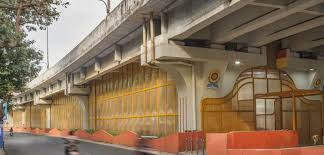In a city better known for its textile mills and diamond trade, a new kind of urban experiment is unfolding beneath its bridges. Where concrete shadows once marked spaces of neglect, children now gather for table tennis matches, teenagers play box cricket, and families pause for games of chess.
Breathing Life Into Forgotten Spaces
The project, designed by local architects and backed by the municipal corporation, aims to reclaim dead urban space and convert it into accessible public commons. With bright fencing, safety nets, and painted murals, the underpass has been transformed into a recreational hub that feels less like an overlooked corner of the city and more like a community plaza.
Addressing a Chronic Shortage
For Surat, one of India’s fastest-growing cities, the shortage of public parks and playgrounds has long been a concern. Urban planners note that the under-bridge initiative provides a cost-effective alternative in dense neighborhoods where land is scarce and expensive. Residents say the space has not only given children a safe place to play but has also reduced loitering and misuse of the area.
A Model for Other Cities?
The question now is whether this model can be replicated across India’s other metropolises. With hundreds of flyovers and metro lines, cities from Delhi to Bengaluru have similar underutilized spaces. Experts warn, however, that scaling such projects will require clear maintenance strategies, security measures, and community participation to prevent decay.
Innovation Rooted in Necessity
For now, Surat’s under-bridge playgrounds stand as a symbol of urban ingenuity — a reminder that the most unlikely spaces, when reimagined, can become centers of connection. What was once concrete left in shadow is today lit by movement, laughter, and a sense of shared belonging.


